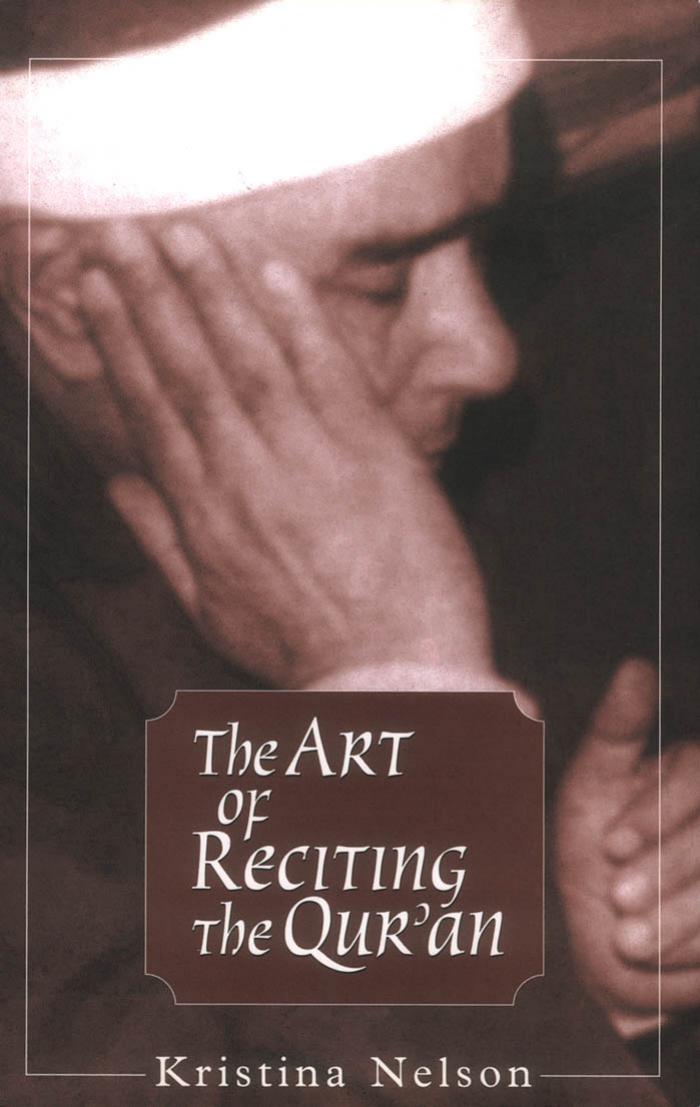The Art of Reciting the Qur'an by Kristina Nelson

Author:Kristina Nelson [Nelson, Kristina]
Language: eng
Format: azw3, pdf
Tags: -
Publisher: University of Texas Press
Published: 2014-11-11T05:00:00+00:00
Repetition/Sectioning of the Text
The basic structural unit of the recitation performance is the phrase followed by a pause. The reciter is free to end his melodic phrase at any point in the text as long as he does not obscure or distort the meaning: correct usage of the rules of pause and phrase initiation (waqf and ibtidāʾ) ensures this. In general, longer phrases (and the longer durational options) are characteristic of the mujawwad style, for they give the reciter the opportunity to exploit his melodic inventiveness, to make use of modulation skills, or simply to demonstrate the sheer physical virtuosity of long breath capacity.
One structuring technique characteristic of this style is to present the text in short clear phrases characterized by syllabic and unornamented melodies, and then to repeat the text in a single long phrase. In fact, a sequence of short phrases usually signals a melodically elaborate recapitulation of the text executed in a single long breath. This technique allows the reciter to be both clear and inventive in his art, fulfilling demands both of the ideal and of the musical aesthetic. The effect on the audience is to heighten involvement by means of delaying the resolution provided by the longer phrase: that is, the greater the sequence of short phrases, the more tension is prolonged. The tension and release experienced by the listeners, however, is evident in their response, which is restrained until it breaks like a wave in the pause following the long phrase.
Although the through-recited style of the murattal is also characteristic of the mujawwad style as done by reciters of past generations, more and more reciters are using their knowledge of pause to clarify or emphasize a part of the text. This adds a rhetorical and dramatic element to the recitation. The mujawwad phrase may therefore be composed of not only a verse line, but a single word, a word repeated several times, a few words, or several verses, depending on how the reciter wishes to convey the text. This kind of phrasing varies according to the reciter’s understanding of the text and/or his personal style, or even the demands of the melodic line. Since the sense of a phrase may or may not be complete, one way in which the reciter builds tension and strikes emphasis is to prolong the syntactic as well as the melodic resolution of a phrase.
Two examples of sectioning are given in figures 8 and 9. In the first, the reciter isolates the word ʾAḷḷh in a single phrase. Since ʾAḷḷh is also an exclamation of wonder and delight, it not only emphasizes that God is the light of the heavens and earth, but acts as a commentary on that statement, as well as the whole section of text which the reciter now repeats. In the second example, the dramatic high point of the text is the command “Prostrate yourselves to God” (phrase 17), which is itself part of a longer verse. Most of the listeners know the text and anticipate this point in the text.
Download
The Art of Reciting the Qur'an by Kristina Nelson.pdf
This site does not store any files on its server. We only index and link to content provided by other sites. Please contact the content providers to delete copyright contents if any and email us, we'll remove relevant links or contents immediately.
The History of Jihad: From Muhammad to ISIS by Spencer Robert(2509)
Nine Parts of Desire by Geraldine Brooks(2283)
The Turkish Psychedelic Explosion by Daniel Spicer(2247)
The First Muslim The Story of Muhammad by Lesley Hazleton(2159)
The Essential Rumi by Coleman Barks(1932)
1453 by Roger Crowley(1881)
The Last Mughal by William Dalrymple(1797)
Trickster Travels: A Sixteenth-Century Muslim Between Worlds by Davis Natalie Zemon(1785)
Muhammad: His Life Based on the Earliest Sources by Martin Lings(1569)
God by Aslan Reza(1564)
by Christianity & Islam(1564)
A Concise History of Sunnis and Shi'is by John McHugo(1518)
Magic and Divination in Early Islam by Emilie Savage-Smith;(1461)
No God But God by Reza Aslan(1438)
The Flight of the Intellectuals by Berman Paul(1401)
Art of Betrayal by Gordon Corera(1368)
Nothing to Envy by Barbara Demick(1329)
What the Qur'an Meant by Garry Wills(1326)
Getting Jesus Right: How Muslims Get Jesus and Islam Wrong by James A Beverley & Craig A Evans(1279)
